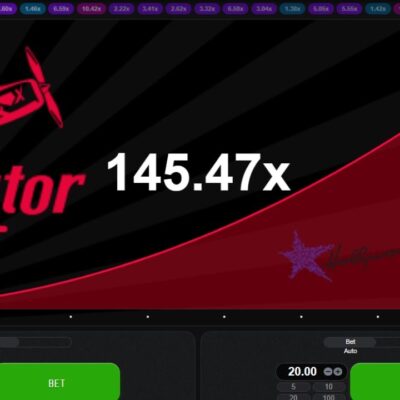In today’s booming creator economy, podcasts have emerged as one of the most powerful tools for storytelling, education, and branding. Whether you’re an independent podcaster, a media professional, or a corporate content team, the key to producing high-quality audio lies in a reliable, well-structured technical setup.
But what really separates a “good” podcast from a “great” one? Clarity. And that doesn’t just refer to speech—it also refers to how clearly your audio signal flows through the system.
This is where an audio signal flow diagram becomes an essential tool. Especially when you’re building a podcast studio from scratch or upgrading your current rig, understanding how sound moves from the microphone to your listener’s ears is critical. It helps prevent technical issues, ensures audio fidelity, and enables efficient troubleshooting when things go wrong.
In this blog, we’ll explore the ideal podcast setup using simple and effective pathways, how to represent it through a professional audio signal flow diagram, and how leading tools like XTEN-AV can streamline this process.
Why Start with XTEN-AV for Podcast Audio System Design?
Before diving into signal flow paths, it’s important to choose the right design tool.
XTEN-AV is a top-tier AV design automation platform that simplifies the creation of professional AV systems, including podcast setups. For AV integrators, studio consultants, or even DIY audio engineers, XTEN-AV helps you:
-
Auto-generate audio signal flow diagrams
-
Choose compatible audio gear from real-world manufacturer libraries
-
Design schematics with drag-and-drop tools
-
Link diagrams to equipment BOMs and rack layouts
-
Collaborate remotely with teams
With XTEN-AV, you don’t just sketch your system—you document it with industry-grade accuracy. For podcasters scaling their workflow or media pros designing multiple studio spaces, XTEN-AV becomes an indispensable tool.
Understanding Audio Signal Flow in Podcasting
An audio signal flow diagram illustrates how audio signals travel through the podcast setup—from source (e.g., microphone) to output (e.g., streaming platform, speakers, headphones). This flow includes all intermediate processing, routing, and recording steps.
In podcasting, a typical signal chain includes:
-
Microphones (XLR or USB)
-
Audio interface or mixer
-
Digital Audio Workstation (DAW)
-
Headphones or monitors
-
Optional outboard gear (compressors, EQs, preamps)
-
Streaming software or upload platforms
Mapping this system out with a clean diagram ensures every link is accounted for and every device is configured properly.
The Core Components of a Podcast Audio Setup
Let’s start by identifying the core components most podcasters use.
Microphones
-
Dynamic Mics: Great for untreated rooms (e.g., Shure SM7B)
-
Condenser Mics: Higher sensitivity, great for studio setups
-
USB Mics: Plug-and-play convenience
Audio Interfaces
-
Convert analog mic signals into digital format for your computer
-
Often include phantom power and gain control
-
Examples: Focusrite Scarlett, PreSonus AudioBox, Rode AI-1
Mixers
-
Combine multiple inputs, allow real-time adjustments
-
Some offer USB outputs for digital recording
-
Analog and digital options available
Outboard Gear (Optional)
-
Preamps: Improve mic signal quality
-
Compressors: Manage dynamic range
-
Equalizers: Shape tonal balance
Headphones & Monitors
-
Closed-back headphones for live monitoring
-
Studio monitors for mixing/editing playback
DAWs and Recording Software
-
Examples: Audacity, Adobe Audition, Reaper, GarageBand
-
Accepts audio from interface and enables multitrack editing
Streaming or Hosting Platforms
-
OBS, Restream, Spotify for Podcasters, Anchor.fm, etc.
What Is an Audio Signal Flow Diagram for a Podcast Setup?
An audio signal flow diagram maps out:
-
Where your podcast audio starts (e.g., a mic)
-
What devices it passes through (e.g., interface, compressor)
-
Where it is recorded or heard (e.g., DAW, headphones)
Think of it like a GPS for your audio system.
Basic Elements in a Diagram
| Element | Symbol / Icon |
|---|---|
| Microphone | ⊙ or mic icon |
| Interface / Mixer | Rectangle box |
| Cables/Connections | Arrows |
| DAW / Software | Monitor icon |
| Output Devices | Headphones/speaker |
Key Info to Include
-
Signal type: analog, USB, digital
-
Port numbers or device names
-
Signal direction (input/output)
-
Any gain, EQ, or processing stages
Building a Simple Signal Flow Diagram — Step-by-Step
Let’s create a diagram for a basic solo podcast setup:
Gear List
-
Shure SM7B (dynamic mic)
-
Cloudlifter CL-1 (inline preamp)
-
Focusrite Scarlett 2i2 (interface)
-
Laptop with Reaper (DAW)
-
Audio-Technica ATH-M50X headphones
Step 1: Microphone ➝ Preamp
Audio Signal Flow Diagram Notes:
-
Source: Shure SM7B
-
Signal: Low-level analog (mic level)
-
Flow: ➝ Cloudlifter (adds gain using phantom power)
Step 2: Preamp ➝ Audio Interface
-
Output from Cloudlifter to Scarlett 2i2 input
-
Signal is now boosted mic-level
-
Scarlett converts analog to digital
Step 3: Interface ➝ Laptop/DAW
-
USB connection to laptop
-
DAW (Reaper) records multitrack audio
-
Real-time waveform monitoring
Step 4: Interface ➝ Headphones
-
Scarlett headphone out to ATH-M50X
-
For zero-latency monitoring
Diagram Summary:
In an audio signal flow diagram, this is drawn using blocks, arrows, and annotations. XTEN-AV makes this process even easier by using drag-and-drop real device icons and automatic routing logic.
Expanding to Multi-Mic Podcast Setups
Scenario: 2-Host Setup with Mixer
Additional Gear:
-
2 x SM58 mics
-
Zoom PodTrak P4 Mixer
-
Two sets of headphones
-
Laptop for editing or livestreaming
New Signal Path:
-
Mic A ➝ Mixer Input 1
-
Mic B ➝ Mixer Input 2
-
Mixer ➝ USB ➝ Laptop (DAW)
-
Mixer ➝ Headphone Outputs 1 & 2
This setup allows real-time monitoring and mixing for both hosts. You can use color-coded lines in your audio signal flow diagram to distinguish each path.
Adding Remote Guests and Outboard Gear
Scenario: Remote Interview Podcast with Processing
New Gear:
-
Zoom H6 (interface and field recorder)
-
DBX 286s Preamp/Compressor
-
Laptop (Zoom or Riverside.fm)
-
USB Mix-Minus Setup
Signal Path (Condensed):
-
Mic ➝ DBX 286s (processing)
-
➝ Zoom H6 (input)
-
➝ USB to laptop for remote guest
-
➝ Output from laptop to Zoom H6 (mix-minus)
-
➝ Headphones for live monitoring
This type of complex setup requires a well-labeled audio signal flow diagram to avoid feedback, ensure clarity, and eliminate routing confusion.
Digital Signal Flow Diagrams with XTEN-AV
Here’s why XTEN-AV is a top pick for podcast system designers:
| Feature | Benefit |
|---|---|
| Auto-routing | Save hours manually connecting signals |
| Real product libraries | Choose Shure, Focusrite, Rode, etc. |
| Drag & drop interface | No design experience needed |
| Export as PDF, CAD, BOM | Perfect for documentation |
| Collaborate in cloud | Teams can design or update remotely |
Pro Tip: Use XTEN-AV to link your audio signal flow diagram to your rack elevation, cable schedule, and equipment list for full end-to-end project documentation.
Troubleshooting with an Audio Signal Flow Diagram
When something breaks (no mic input, distorted audio, feedback), use your diagram to:
-
Trace the signal path
-
Check gain stages
-
Verify cable routing and signal flow
-
Ensure no signal loops exist
-
Isolate one link at a time
Whether you’re dealing with analog gear, digital interfaces, or software conflicts, a diagram offers a logical, visual map to resolution.
Best Practices for Podcast Signal Flow Diagrams
-
✅ Keep diagrams updated after every gear change
-
✅ Label devices by model and port
-
✅ Color-code signal types (analog, USB, digital)
-
✅ Use separate diagrams for input, processing, and monitoring
-
✅ Store in cloud for backup and team access
-
✅ Include notes (phantom power, pad engaged, latency, etc.)
Conclusion
Podcasting is as much about preparation as it is about performance. Designing and documenting your setup with a clear audio signal flow diagram ensures you produce professional-grade sound every time—whether you’re solo in a home studio or producing a panel discussion for a global audience.
With platforms like XTEN-AV, creating these diagrams is faster, easier, and more accurate than ever before. You can build better setups, collaborate with others, and resolve issues before they reach your listeners.





